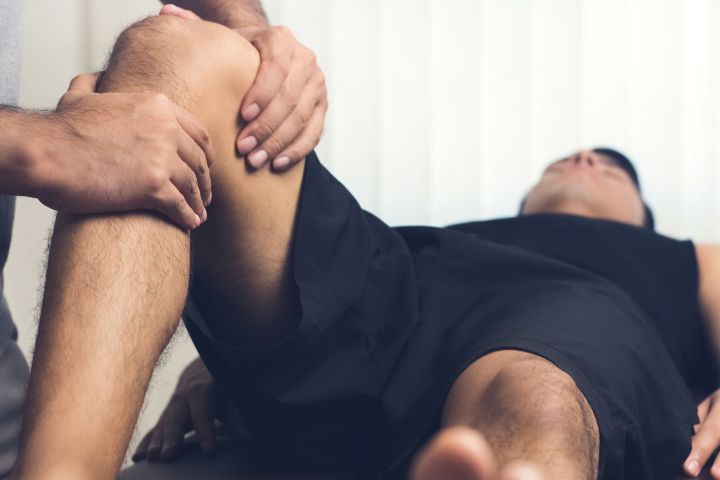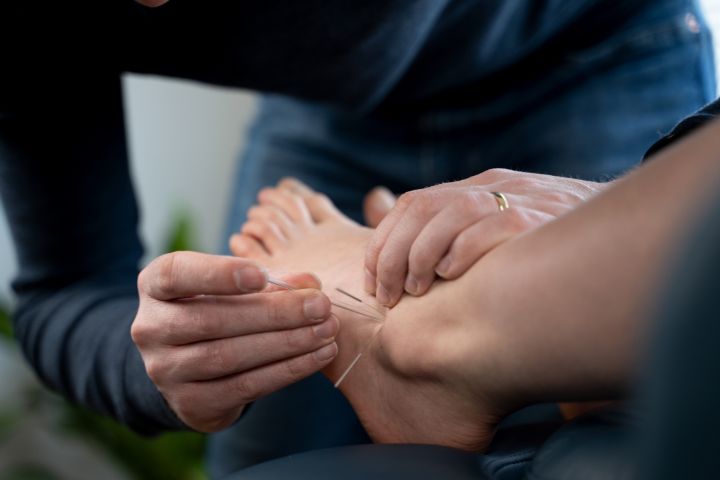We’ve mentioned elsewhere that we’ve become fairly well-known for our expertise in working with Ehlers-Danlos patients for their physical therapy. One modality we’ve come to use a lot with our Ehlers-Danlos patients is dry needling.
In this article, we’ll cover what we know about dry needling for Ehlers-Danlos, and provide some practical tips to help you decide whether dry needling is right for you.
Key Takeaways
- Pain and Muscle Relief: Dry needling alleviates chronic pain and reduces muscle spasms by targeting and releasing tight muscle knots.
- Enhanced Mobility and Circulation: Improves flexibility, range of motion, and blood flow, aiding in tissue repair and reducing inflammation.
- Expert and Comprehensive Care: Most effective when performed by experienced practitioners and integrated into a holistic treatment plan tailored to EDS patients.
Before we discuss the particulars, let’s address the elephant in the room:
Ehlers-Danlos is a unique condition
If you or a loved one has been diagnosed with Ehlers-Danlos Syndrome (EDS) or another hypermobility spectrum disorder, you don’t need to be told that this condition has a huge impact on one’s quality of life. Ehlers-Danlos patients frequently suffer from chronic pain, frequent injuries, emotional distress, and much more.
What’s important to note is that this means that not all patients will respond the same way to any given modality. While physical therapy should be a boon to anyone with Ehlers-Danlos, dry needling is a specific modality with its own set of considerations.
Some patients report that dry needling during their course of physical therapy was a huge difference maker, while some don’t. This is okay. All we ask is that you communicate well with your physical therapist so we know whether our actions are helping or not.
Another quick piece of advice:

Don’t skip the manual therapy and exercise
This is true for any individual modality or treatment involved in the physical therapy process. There are many types of professionals who are certified in dry needling, and for many people, it can be a big help. However, if you’re doing physical therapy, remember that the bulk of the result comes from basic proprioceptive training, targeted exercise, and manual therapy.
Dry needling for EDS can be a big help, but we don’t recommend relying on it solely. Our primary goal should be improving function, which is accomplished through traditional physical therapy approaches.
Why dry needling helps with EDS
Dry needling can help individuals with EDS by addressing some of the musculoskeletal issues commonly associated with the condition.
Ehlers-Danlos patients frequently experience muscle spasms and tightness related to the muscles working so hard to provide stability to hypermobile joints. This can be made worse by muscular weakness and sensory neuropathies creating a feeling of burning, tingling, or numbness. Myofascial trigger points are common in EDS patients,
This can be further complicated if the patient has undergone surgeries or other interventions in the past.
Dry needling helps with EDS by addressing myofascial trigger points and loosening tight bands of muscle while we simultaneously engage the patient in therapeutic exercise and proprioceptive training to improve joint stability, balance, and strength.
Benefits of dry needling for Ehlers-Danlos
Chronic pain management
Dry needling works by relieving tension in trigger points and stimulating sensory nerves to release endorphins. This provides a pain modulation effect that can deliver a pain relief experience to patients who have been suffering for years.
Reduction of muscle tension and muscle spasms
As mentioned above, muscle spasms are a frequent occurrence for many EDS patients. Dry needling helps to relax these overactive muscles and promotes a more normal muscle function.
Better joint support
Looser and more balanced muscles can provide better support for hypermobile joints, reducing the risk of dislocations and injuries. Of course, this benefit will be most properly realized if paired with an exercise program.
Improved circulation and healing
The mechanical action of the needles can improve blood flow, bringing more oxygen and nutrients to the affected areas. This can aid in the healing process and promote tissue repair and recovery as we go through the physical therapy process.

Some considerations for dry needle therapy and EDS
While dry needling can provide significant benefits, there are some things you’ll want to be aware of if you’re considering using this therapeutic approach to manage EDS.
Make sure the provider is familiar with EDS
It may go without saying, but not all providers are versed in the nuances of managing care for an Ehlers-Danlos patient. With dry needling, it’s no different. You’ll want to make sure the provider is familiar with EDS, so as to avoid causing any damage or excessive bruising.
Monitor any adverse effects
As we mentioned in another article (further reading: does dry needling hurt?), some patients experience some pain from the therapy itself. While excessive pain isn’t common, it’s important to monitor these effects so that we can either make adjustments to the treatment plan or try another modality altogether.
Integrate with other therapies
We’ll mention it again, but dry needling is best viewed as an adjunct to other therapeutic approaches. Make sure to discuss your overall physical therapy and exercise plan with your provider; don’t rely on dry needling as your sole source of relief. A holistic approach is almost always going to provide a better overall outcome in managing Ehlers-Danlos Syndrome.

















